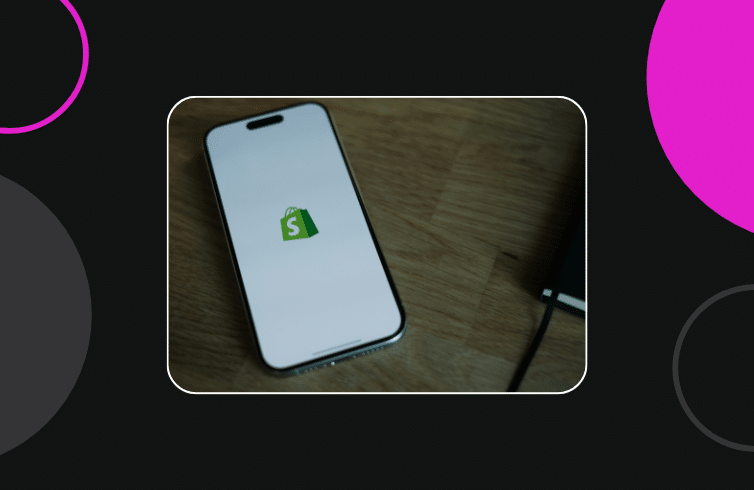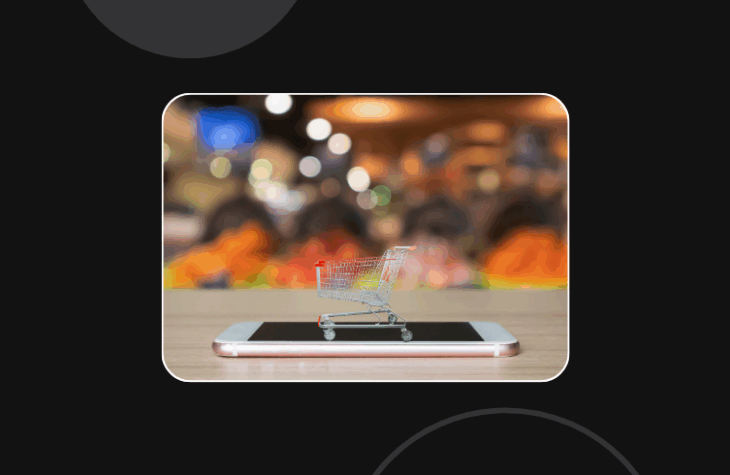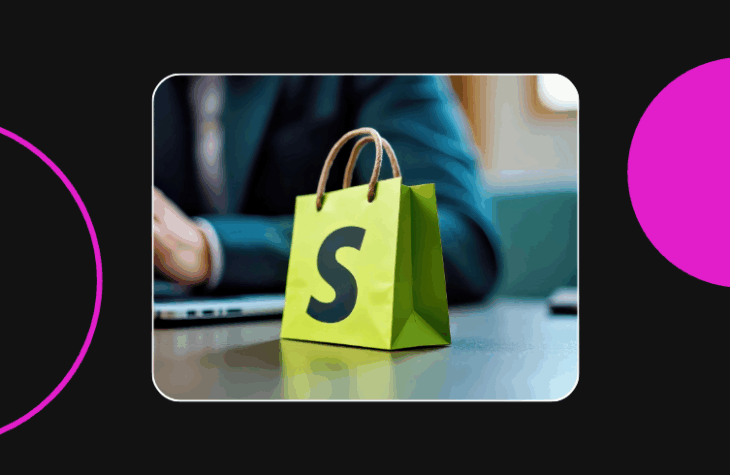5 Reasons Why You Need an OMS if You’re on Shopify

Shopify has revolutionized e-commerce and empowered countless entrepreneurs to build thriving retail businesses. However, your retail success quickly hits Shopify limits, and managing omnichannel inventory and order fulfillment starts to feel like a puzzle with missing pieces. Delivering your ideal customer experience gets more challenging.
If you’re starting to feel the pinch of Shopify order fulfillment capabilities as your business scales, getting the flexibility you need is easier than ever without dropping the Shopify platform you love. This solution is fabric OMS!
Level-up Shopify with a modern OMS
Ah, Shopify. Its tools power millions of merchants across the globe. For many aspiring creators, direct-to-consumer brands, and growing retailers, it’s the fast, easy way to launch an online business for just a few bucks per month. It’s no wonder the company has transacted over $1 trillion in sales since its inception a decade ago.
But, as your business grows, it’s easy to bump up against Shopify’s limits, which drags on your scalability and frustrates customers. You might even be hitting that ceiling today with restricted inventory management tools, inflexible order routing, and inadequate fulfillment options—all of which chip away at the customer experience with delayed shipments, not to mention late nights for your team.
Luckily for you, there’s no need to reconsider the platform and begin planning a massive replatforming effort. Instead, there’s plenty of room to scale without ripping and replacing, well, anything. Just extend Shopify with a modern order management system (OMS).
Let’s look at five reasons why Shopify order fulfillment might need to be reimagined with an AI-first OMS.
1. You long for centralized, unified inventory management
Shopify is a full-featured commerce platform that provides real-time inventory visibility across locations. You get accurate stock levels to help prevent stockouts and connections with other e-commerce platforms. Plus, there’s a consolidated order dashboard to monitor and prioritize fulfillment.
But as you grow, things start to get sticky. Here’s what to look out for:
- Shopify restricts the number of managed inventory locations, and with just a few brick-and-mortar stores and a couple of warehouses and distribution centers, you’re hitting those limits. If you expect to build out an extensive fulfillment network, forget it.
- Even with just a few inventory locations, Shopify’s data synchronization can be slow enough to cause stockouts and canceled orders.
- For omnichannel retailers, Shopify also constrains inventory pools dedicated to different channels. Strategic inventory management gets pushed aside for manual workarounds and stocking inefficiencies.
A dedicated OMS eliminates inventory management gaps across stores, warehouses, and distribution centers. Instead, you get a single view of stock to manage how you like: by brands, channels, locations, whatever! The winner, ultimately, is the customer, who knows they can trust they’ll get what they ordered.
2. You need dynamic order management capabilities
Shopify delivers a pretty smart order management tool, which gives you the power to allocate orders to the optimal fulfillment location. That can be the closest store, most efficient warehouse, or most cost-effective 3PL partner. You can even minimize split shipments and prioritize shipping locations.
As your needs become more complex, however, Shopify makes it more difficult to deliver. Here’s what you can expect:
- While you can minimize split shipments, Shopify order fulfillment limits you to just a few parameters, like markets and distance to the customer. Building in more flexible options or logic requires you to write custom code to extend the order routing rules.
- Routing rules are universal in Shopify. Every rule gets applied to every order, and exceptions are tricky.
- Shopify allocates inventory immediately. If you have scenarios where an order is to be held or shipped later, you and your customer are out of luck.
- Orders are fulfilled as they arrive, which is sequential and based on predefined priorities. You have little wiggle room to adjust fulfillment dynamically based on locations, distances, or other efficiency-boosting factors. And there’s no support for batch routing or scheduling, limiting your ability to handle complex or high-priority orders.
A modern OMS brings AI and real-time, dynamic flexibility to fulfill nearly all of your order management wishes. Shopify AI tends to focus on creative tasks like crafting emails and editing images, but you want these innovations to reduce split shipments, configure routing rules based on your unique needs, automate order tracking and returns, and fulfill orders using logic that works for your goals, logistics, and customers.
3. You have omnichannel fulfillment dreams
Fulfillment flexibility is the name of the retail game these days, especially as more customers demand near-instant shipping options. Shopify delivers with Buy Online, Pick Up In Store (BOPIS) and Ship from Store, so you can use your brick-and-mortar stores to speed up those deliveries. Customers can even mix shipping and pickup options in the same order, and your admins can manage local deliveries and in-store pickups.
However, it gets a bit more complicated with Shopify when customers want to extend that freedom to choose. Here’s where you and your omnichannel customers can get a bit frustrated with Shopify:
- For customers who need that raincoat today but can wait on the shoes, Shopify blocks the ability to mix BOPIS and shipping in the same order.
- For larger operations, Shopify’s distributed order management (DOM) tools and in-store fulfillment capabilities are limited. For example, you can’t split an order’s fulfillment across multiple locations if inventories are low or a single order requires items from multiple locations.
- Local deliveries, fast becoming an expectation of customers and modern retailers, aren’t supported in Shopify for larger operations. If you work around that limitation, Shopify limits checkout customizations.
A flexible OMS creates a better customer experience with equally flexible store fulfillment options. BOPIS and Ship from Store are at your, and your customers’, fingertips. While Shopify AI can write FAQs and emails, you want AI to split shipments most efficiently, fulfill orders, and balance inventories based on your rules.
4. You need seamless integration across channels
Every growing retailer has multiple software vendors in its stack. No single vendor does it all, which makes Shopify’s integration to channels like Amazon, eBay, Facebook, and Instagram an easy ticket to managing omnichannel orders from one platform. Shopify also integrates with ERP, 3PLs, and APIs for custom workflows and automations.
However, with growth and scale comes complexity, and Shopify’s roadblocks can limit your flexibility. Here’s what to expect as your business grows on Shopify:
- When it comes to workflow customization, the options on Shopify are thin. That makes it difficult when you’re trying to incorporate complex or unique business processes across systems.
- As mentioned, no one platform does it all; integration across your stack is to be expected. However, Shopify has a cumbersome approach to integration with some third-party and legacy platforms that can disrupt data synchronization and lead to operational inefficiencies and delays.
A modern OMS brings fast and easy integration to Shopify and every other application in your commerce ecosystem. It keeps your fulfillment and back office tools connected seamlessly to orders, inventory, and other systems without slow, manual, or technical maintenance efforts.
5. You want to build a better customer experience
With today’s consumers, the customer experience matters more than ever. Building a better customer experience helps overcome glitches without compromising revenue, loyalty, or brand reputation. Shopify can keep customers updated on order status, easy and flexible order updating, and more. It also offers tools to automate repetitive tasks and analytics to find opportunities to improve the customer experience.
But, again, you’ll quickly hit the limits of what you can do to drive better customer experiences. Here are a few things to consider as your customer experience plans begin to hit Shopify’s limits:
- Shopify order fulfillment doesn’t consider a customer’s location when determining fulfillment methods. Instead of optimizing for the shortest routes and lowest shipping costs, you might end up with frustrated customers waiting longer and paying more.
- It’s cumbersome to handle exceptions for fragile items, store-only exclusives, and other special cases in Shopify. Again, options are limited and customers pay the price in time and cost for items that might be critical to the overall experience.
A robust OMS fills these Shopify gaps with added fulfillment flexibility and easy re-routing caused by exceptions and unexpected events. As your business grows, you’ll need more options to keep customers happy as your offerings expand and become more critical to your brand.
Extend Shopify for real-time inventory and omnichannel fulfillment success
You’ve built your business on Shopify. But even the strongest foundations benefit from strategic support, especially when the customer experience is crucial to continued growth.
Adding fabric OMS to your Shopify business builds a more resilient, efficient, and customer-centric omnichannel operation that brings agility, intelligence, and control over inventory management, order management, fulfillment, integration, and more.
Don’t let these limitations limit your success. Embrace the advantages gained with fabric OMS and continue pushing your business to greater heights.
Ready to explore how fabric’s AI-first OMS can help your Shopify-powered business? Let’s talk! Book a meeting with one of our Shopify experts today.

Digital content editorial team @ fabric





